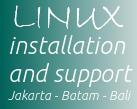Governmental Structure
A presidential representative democratic republic
Article I of the Constitution declares that Indonesia is led by a republican government that recognizes the sovereignty of the people. This sovereignty was suppressed by founding president Soekarno in 1957 with his declaration of martial law and ‘Guided Democracy’ – deemed necessary to quash regional rebellions and militant Islam. Further repression came from president Soeharto, who exterminated leftists, enshrined the military’s socio-political role and reduced the people to “floating masses” with no real political power.
After Soeharto was forced to resign amid mass protests and financial turmoil in 1998, the vaguely worded 1945 Constitution was amended four times – in 1999, 2000, 2001 and 2002 – growing from 37 articles to 73.
Key constitutional reforms included:
- Ensuring that Indonesia will never again be ruled by a dictator. The president is limited to a maximum of two consecutive five-year terms in office.
- Increasing the power of the legislature over the president.
- Introduction of regional autonomy, which has given the provinces and regencies much greater powers.
- Protection of human rights.
- Mandating direct regional, national and presidential elections.
- Allocation of 20% of the state budget to education.
- Independence of the judiciary.
- Creation of the Constitutional Court and Judicial Commission.
The Indonesian government comprises numerous organs of the state and three branches of government: executive, legislative and judicial.
State Organs
- The Presidency
- The People's Consultative Assembly (Majelis Permusyawaratan Rakyat)
- The House of Representatives (Dewan Perwakilan Rakyat)
- The Regional Representative Council (Dewan Perwakilan Daerah)
- The Supreme Court (Mahkamah Agung)
- The Constitutional Court (Mahkamah Konstitusi)
- The State Audit Board (Badan Pemeriksa Keuangan)
- The Corruption Eradication Commission (Komisi Pemberantasan Korupsi)
- The General Elections Commission (Komisi Pemilihan Umum)
- The Judicial Commission (Komisi Yudisial)
Branches of Government
Executive
The executive branch of government is headed by the president and vice president. The president, now limited to a maximum of two consecutive five-year terms in office, serves as head of state, head of government and commander-in-chief of the Indonesian Military. The president appoints cabinet members, who do not necessarily have to be members of the legislature or from political parties.
Legislative
The most powerful day-to-day branch of the legislature is the House of Representatives (DPR), which has 550 members, directly elected by the people. DPR members come from political parties authorized to contest general elections. The DPR has the power to pass laws, conduct formal inquiries and oversee the state budget.
The People's Consultative Assembly (MPR) used to be Indonesia’s top legislative body, responsible for electing the president and vice president. The MPR now functions largely symbolically as an umbrella body for the DPR and the DPD, although it can still be convened to dismiss the president and vice president in line with the Constitution. It can also amend the Constitution.
The Regional Representatives Council (DPD) has four non-partisan representatives from each province, elected by the people. Its members may propose legislation but they cannot deliberate or pass it.
Judicial
The Supreme Court is the highest court of appeal for criminal and civil verdicts. It oversees all lower courts: general, military, administrative, religious and commercial courts. It is independent of the executive and legislative branches of government. Public courts comprise state courts at the municipal and regency level, followed by high courts at the provincial level.
Others
State organs not under the executive, legislative and judicial branches of government include the State Audit Agency (BPK), the Constitutional Court (MK), and the Corruption Eradication Commission (KPK).
BPK’s job is to conduct audits, ensuring that taxation revenue and state funds are used responsibly.
MK makes final, binding decisions on the constitutionality of laws and disputed election results.
KPK investigates and prosecutes major corruption cases.
Local Government
Under the Soeharto regime, Indonesia had 27 provinces, including East Timor, which later seceded. Indonesia now has 34 provinces, the newest being North Kalimantan province in October 2012.
Decentralization, initiated by regional autonomy legislation enacted over 1999-2004, has given the provinces much greater authority and the power to make their own rules, much to the dismay of some investors. The central government has retained control over only five policy areas: foreign affairs, defense and security, justice, monetary and fiscal policy, and religion. Local governments are responsible for all other policies and services.
The provinces of Aceh (full name: Nanggroe Aceh Darussalam), Papua and West Papua have special autonomy status for their governance. This means that Aceh has sharia law and local political parties, while Papua and West Papua have not experienced significant improvements.
Yogyakarta and Jakarta also have special status. Yogyakarta is classified as a “special region” (Daerah Istimewa Yogyakarta) because it still has a sovereign sultanate, while Jakarta is the “special capital city region” (Daerah Khusus Ibu Kota Jakarta).
As part of the reform process, Indonesia began holding direct local elections in 2005. Citizens previously voted for political parties instead of candidates.
Administrative Subdivisions
Province level: Each province is led by a Governor (Gubernor), and a Provincial House of Representatives (DPRD I). The Indonesian word for province, propinsi, is transforming into provinsi.
Regency & Municipal level: Each regency (kabupaten) is led by a Regent (Bupati). Municipalities (kotamadya) are led by a Mayor (Walikota). Regencies and municipalities have a Regional House of Representatives (DPRD II).
District level: Each district (kecamatan) is led by a District Head (Camat).
Subdistrict level: Subdistricts are classified either as kelurahan (urban subdistrict or 'ward') or desa (rural subdistrict). A kelurahan is led by a Lurah (urban subdistrict head), while a desa is led by a Kepala Desa (subdistrict head). The lurah is a civil servant appointed by the local government. The kepala desa is elected by popular vote. Some provinces have different classifications for subdistrict units. For example, Aceh calls villages gampong, while West Sumatra calls them nagari.
Village level: In parts of Java, subdistricts are further subdivided into dusun or dukuh (villages). They are led by Kepala Dusun and Kepala Dukuh. These village chiefs are rarely paid formal wages but are usually given free land for the duration of their service.
RW & RT: Village administration is supported by community associations called Rukun Warga (hamlet), which are further subdivided into Rukun Tetangga (neighborhood). Rukun itself means 'harmonious'. Leaders of these units are usually men, known as Pak RW and Pak RT (RW Head and RT Head). They are not officially paid by the state but the job carries local prestige and perks. RT units have about 30 to 50 households, while RW units have about 100 to 150 households, or more in bigger cities. Each RW is classified with a Roman numeral, such as RW I, RW II, RW III, while RTs have Arabic numbers, such as RT 1, RT 2, RT 3.
The RT Head has authority to deal with applications for birth certificates, residency certificates and other documents related to identification and real estate. RT Heads are elected by direct voting, usually once every three years. Voting is restricted to locals in possession of a family registration card (kartu keluarga).




